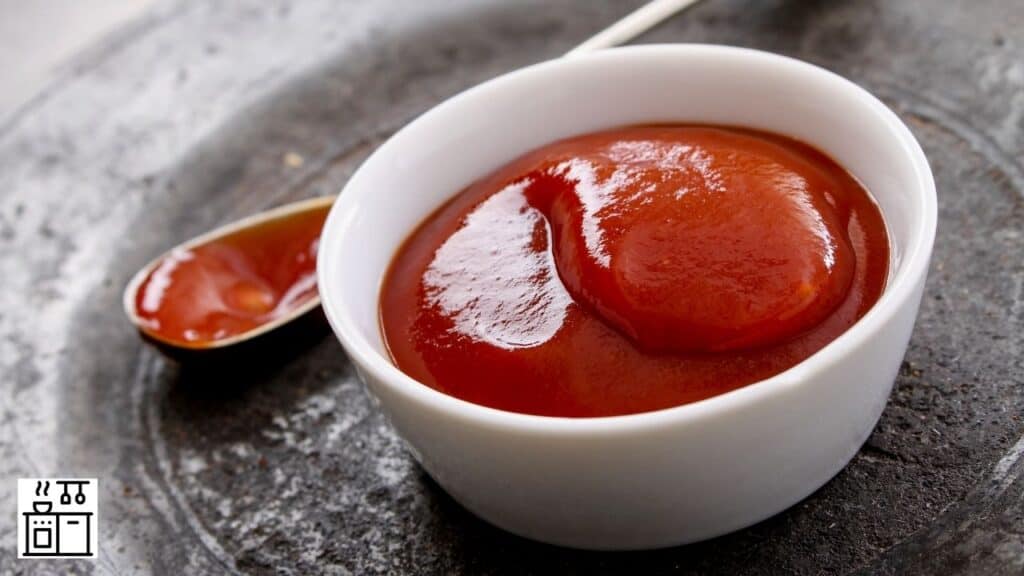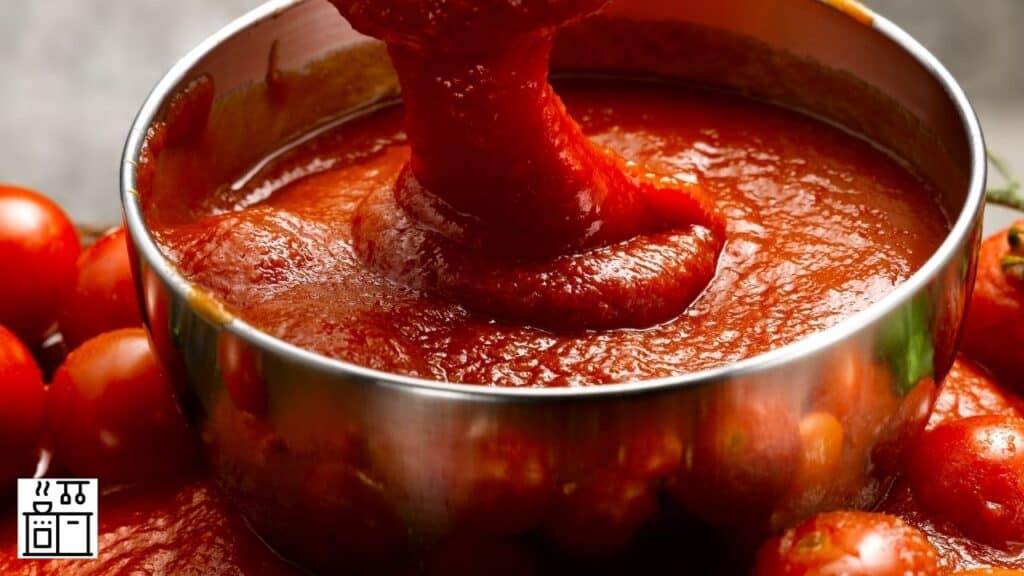Tomato paste is one of the most important ingredients of a classic chili. This thick, zesty vegetable paste not only binds the beef and beans but also enhances the aromatic effect of the herbs and seasonings in this rich dish. Now, if you don’t have tomato paste for your chili, tomato sauce may seem like a good substitute. But, can you put tomato sauce in chili?
Yes, you can put tomato sauce in chili instead of tomato paste. However, tomato sauce is runny and not as concentrated as tomato paste. So you will need more tomato sauce than tomato paste to create the same flavor. The additional liquid sauce can affect the texture of the chili and make it watery.
Let’s talk about this in more detail now.
Is Tomato Paste Important In Chili?
Chili, or chili con carne, is a hearty and comforting, wholesome dish that appeals to people of all ages.
Meat and beans form the main ingredients of this dish.
They’re simmered in a luscious, aromatic sauce with various herbs and spices.
The beauty of the chili is that the recipe has endless possibilities.
You can create different variations of the classic by playing around with different ingredients, making your very own version.
For instance, Texas chili uses meat, peppers, onions, and spices but no beans or tomatoes.
Meanwhile, Midwestern chili has beans, fat, and various other ingredients.
You can also vary the meat used in a chili based on what is available and your taste preferences.
Some recipes use chicken, mushrooms, and even zucchini instead of ground beef.
Tomato paste is a primary ingredient in traditional chili recipes.
The strong zesty flavor of the tomato paste forms an excellent base for meat and beans.
The acidity of the tomatoes also enhances the flavor of the spices and aromatics in the dish.
Tomato paste is highly concentrated.
It’s made by cooking tomatoes for several hours till they reduce to a thick red paste.
It’s acidic with a hint of sweetness. Tomato paste also has a characteristic Umami flavor.
The benefit of using tomato paste in a recipe is that you need a very small quantity to inject a strong tomato flavor.
Just a spoonful will pack a punch in a dish like chili.
So it’s a good idea to have this ingredient in your pantry at all times.
Recommended: Are Tomatoes Citrus? | Canning Tomatoes without a Canner | Can Sun-Dried Tomatoes Go Bad?
What Can You Use Instead Of Tomato Paste In A Chili?
Tomato paste is essential for a good chili.
Nonetheless, you can still make chili without this ingredient by replacing tomato paste with another form of tomato.
The substitutes may not impart the same flavor as tomato paste because they will not be as concentrated.
Nonetheless, the chili will taste better than if you skip this ingredient.
Now, let’s look at the next best substitutes for tomato paste in chilis.
1. Tomato Sauce
Tomato sauce isn’t as concentrated as tomato paste. It lacks the sweetness of tomato paste too.
Nevertheless, it’s one of the best substitutes for tomato paste in a chili.
Since tomato sauce isn’t as concentrated as tomato paste, you will have to use a larger quantity for a similar taste.
For every tablespoon of tomato paste, you will need two tablespoons of tomato sauce.
You can also add a pinch of sugar into the sauce to make the taste resemble tomato paste.
The extra liquid in tomato sauce will increase the volume of a chili.
To adjust the consistency, it’s a good idea to reduce the quantity of other liquids in the recipe.
Depending on the tomato sauce recipe, it may also contain seasonings and herbs.
You may like to check if this will work with the flavors of your chili ingredients before using the sauce in your recipe.
2. Tomato Puree
Like tomato sauce, tomato puree will also impart a tomato flavor to the chili.
So you can use it instead of tomato paste.
Follow the same ratio of two tablespoons of tomato puree for each tablespoon of paste for the same flavor.
Tomato puree isn’t as sweet as tomato paste. So you can add a little sugar into the recipe to adjust the flavor.
3. Ketchup

Ketchup is thicker than tomato puree and sauce. So it will not make the chili too watery.
However, ketchup has a strong and tangy flavor.
It will alter the taste of the chili and add an entirely new flavor to the dish.
If you don’t mind your chili being extra salty or sweet, use ketchup instead of tomato paste.
A 1:1 substitution ratio should work well.
However, if your chili uses large amounts of tomato paste, we don’t recommend this substitution.
You can end up with a dish that tastes entirely different from what is expected.
4. Canned Tomatoes
Canned tomatoes are full of tomato flavor and are a good substitute for tomato paste.
However, canned tomatoes contain more liquid.
They’re also not as concentrated as tomato paste.
So, you will need more quantity to get the same tomato flavor.
An appropriate substitution is 3 tablespoons of canned tomatoes for every tablespoon of tomato paste.
While this will help you achieve the same taste, it will change the consistency of the chili.
A good chili should have a small amount of liquid.
However, adding canned tomatoes will dilute it and make it watery.
If you aren’t fond of a watery chili, reduce the rest of the liquid in the recipe.
You can also boil canned tomatoes to expel excess liquid before adding them to the chili.
5. Fresh Tomatoes
You can make a good meaty homemade chili with fresh tomatoes when tomato paste is unavailable.
It’s an easy substitution for recipes that use canned tomatoes, as fresh tomatoes are just as good.
However, you should first check the quality of the tomatoes.
If your tomatoes are too ripe, you may have to trim the bruised and discolored bits before adding them to the chili pot.
Use fresh tomatoes in a 1:1 ratio for a chili that uses canned tomatoes.
However, if the recipe uses tomato paste, you will need more fresh chopped tomatoes than paste.
You can add chopped tomatoes with the skin into the dish.
There is no need to blanch them before adding them to the dish.
However, blanching will make it easier for the tomatoes to integrate into the dish.
Fresh tomatoes will add more moisture to the chili as they cook and break down.
So you may have to cook the dish for longer to get rid of the excess liquid, unless you don’t mind the watery texture.
Related: How Many Amps Will A Freezer Use? | How Many Crock Pots Can Go On A Circuit? | Cutting Zucchini Ahead of Time and Storing It | 19 Simple Dishes to Make with Ground Beef
How To Thicken A Watery Chili?
One of the main concerns when replacing tomato paste in chili with other tomato-based ingredients is that it alters the texture.
Tomato paste is highly concentrated.
However, tomato sauce, puree, canned tomatoes, and fresh tomatoes have more liquid content.
Adding them to a recipe will increase the liquid in chili and make it watery.
However, reducing tomato-based ingredients will prevent the chili from acquiring the appropriate zesty tomato punch.
Fortunately, you can solve this problem by thickening the sauce using the following methods:
- Simmer it for longer: Allow the chili to cook for a little longer on a low flame until all the excess liquid evaporates and you achieve the desired thickness.
- Add a thickening agent: You can add cornmeal or a slurry of flour or cornflour to the chili and let it cook. These thickening agents will absorb the excess moisture without altering the taste of the chili.
- Add more of the main ingredients: You can prevent the chili from becoming too watery by using more meat or vegetables. Small, finely chopped vegetables like carrots, celery, and potatoes will thicken the mixture while enhancing the nutritional benefits of the chili.

